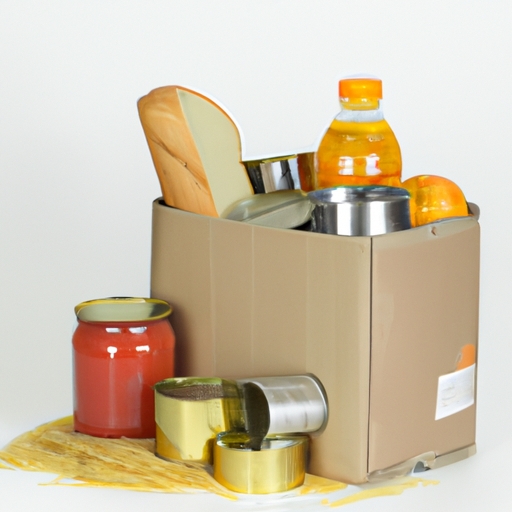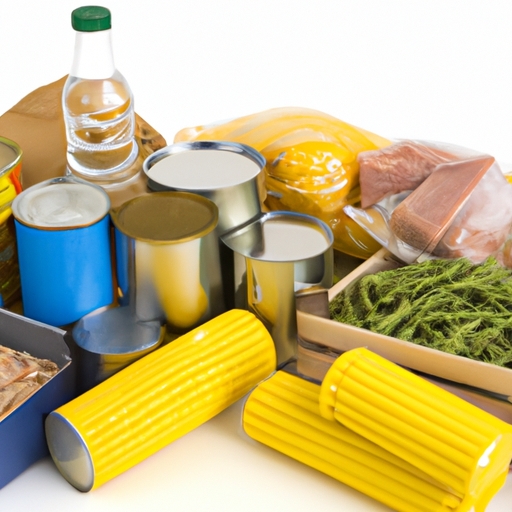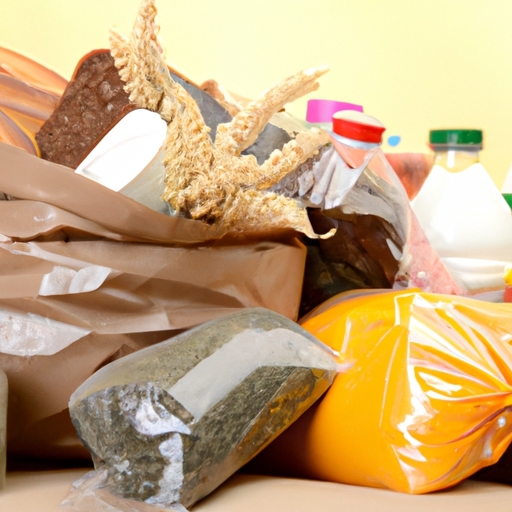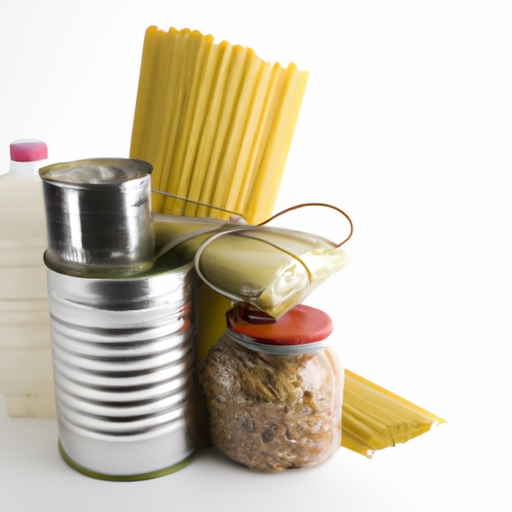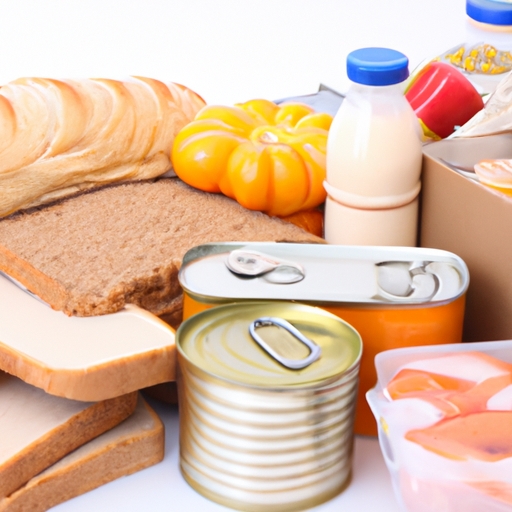Emergency Survival Food Supply
Introduction
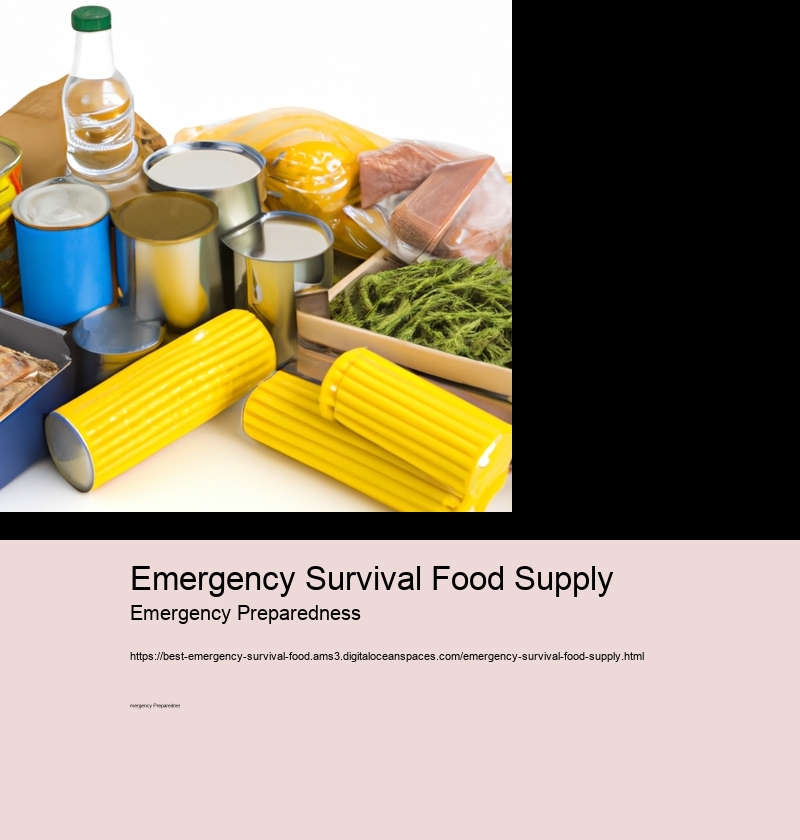
Introduction
(Introduction)
Emergency survival food supply is an important topic to be aware of. No one wants to face a situation where they have no access to food and water. It is always wise to keep emergency supplies of both on hand! Neglecting this could lead to serious consequences in the event of an emergency.
Conversely, having a well-stocked pantry can provide peace of mind and give us the assurance that we are prepared for any type of disaster or difficult situation. There are many different items which should be considered when stocking up on essential food supplies, such as canned goods, long-life proteins, grains, legumes, fruits, vegetables and spices.
Furthermore(,) there are also other non-perishable items which can come in handy during a crisis; these include energy bars, nuts and seeds. These items offer sustenance whilst providing much needed vitamins and minerals too. They can even help us maintain our mental health during times of distress by providing nutrition that may otherwise not be available!
Finally, it is also important to remember that storing up emergency food supplies doesn't mean simply buying large quantities of everyday staples like rice and beans - although these should form part of the plan too! Instead(,) think outside the box: stock up on specialised foods with long shelf lives like dried fruit snacks or freeze-dried meals for easy preparation in case of power outages. Even if you never need them for an actual emergency situation, having these items at home will allow you to have delicious meals even during normal times!
Types of Emergency Survival Food Supply
Emergency survival food supply is an important part of any preparedness plan. (It) can help you stay alive and healthy during a disaster or crisis situation. There are many different types of emergency survival food supplies available, so it's important to know which ones will work best for your particular needs.
First, there are canned goods such as beans, vegetables, and fruit. These provide essential nutrients and calories that may not be readily available during a natural disaster or other emergency situation. Canned goods also have an extended shelf life and can be stored for long periods of time without spoiling.
Moreover, freeze-dried meals are another popular form of emergency food supply; these are lightweight and easily transportable when needed. Freeze-dried meals come in individual packs with complete instructions on how to prepare them quickly in case of an emergency. Additionally, they generally require only water to reconstitute the meal into its original form!
Furthermore, dehydrated foods offer a great way to stock up on essential items while saving space in your pantry or storage area. Dehydrated foods retain their nutritional value better than other forms of preserved food because they don't require much air circulation or heat treatments that could destroy vitamins and minerals. Examples include dried fruits like raisins and apricots; nuts like almonds and walnuts; legumes such as lentils and peas; grains like barley and oats; as well as proteins like eggs, tofu, tempeh, etc.
Lastly, MREs (Meals Ready-to-Eat) provide the ultimate convenience since all components of the meal are contained within one package - no need for additional cooking ingredients! They're designed to withstand rough handling conditions so they'll remain edible even if exposed to extreme temperatures or dropped from heights! These high-calorie meals also contain all necessary nutrients to keep you strong during emergencies!
Overall, there's no shortage of options when it comes to stocking up on emergency survival food supplies - it just takes some research to find what works best for you! Remember: being prepared is key when facing unexpected disasters or crises situations!
Benefits of Having an Emergency Survival Food Supply
Having an emergency survival food supply is essential for any natural disaster, pandemic or other unexpected event. It's (important) to be prepared and not caught off guard! With a reliable stash of food, you can rest assured knowing that you won't go hungry if the worst should happen. Here are some advantages of having an emergency survival food supply:
First and foremost, it provides security. Knowing that you have a stockpile of non-perishable goodies will give you peace of mind should crisis strike. Though it may seem costly at first, in the long run, it could end up saving your life! Not only this, but these foods last much longer than regular groceries – meaning they can be eaten months after purchase with minimal damage.
Moreover, emergency food supplies provide nutrition too! These items contain all the necessary vitamins and minerals your body needs to stay healthy during tough times. This is especially vital if access to fresh produce is limited due to lack of availability or high prices. Plus, many foods come in handy single-serving sizes so you don’t have to worry about waste or spoilage either!
In conclusion, having an emergency survival food supply has countless benefits - from providing security to offering nutritional value. It's definitely worth investing in a few items if possible; after all it could make the difference between life and death in certain scenarios!
Factors to Consider When Creating Your Emergency Survival Food Supply
Creating an emergency survival food supply is a critical task, one that shouldn't be taken lightly. (It's) important to consider a few factors when establishing your stockpile. Firstly, expiration dates are paramount! Ensure you're purchasing items with sufficient shelf life and that are easy to store in bulk. Additionally, prioritize balanced nutrition while stocking up on non-perishable items like grains, canned produce and proteins. To avoid monotony, vary the flavors of your supplies (by) including sauces or seasonings!
Furthermore, consider the size of your family when creating your stockpile. If you have young children, choose foods that can be easily prepared and require minimal effort for maximum nourishment. Also factor in any dietary restrictions or allergies to make sure everyone in your household is catered for during an emergency situation! Lastly, keep an eye on local conditions; if there's a natural disaster coming through the area you may need extra supplies or particular types of foodstuffs. All these considerations should be taken into account prior to forming your emergency survival food supply (to ensure it meets all its needs).
In conclusion, it’s clear that careful thought must be put into creating an effective emergency survival food supply - from expiration dates to nutritional balance - as this could ultimately save lives! With proper planning and consideration these tips will help jumpstart the process of creating a secure food stockpile for any type of catastrophe!
Ideal Storage Locations for Your Emergency Survival Food Supply
Emergency survival food supply is an essential item for any disaster preparedness plan. It's (important) to store it in the correct locations to ensure that you and your family have access to food in case of emergency. The ideal storage locations depend on the type of food, as some require cooler temperatures while others don't!
For canned goods, such as fruits, vegetables and soups, a pantry or cupboard is best. Make sure to keep them away from direct sunlight and in an area that isn't too humid. Place heavier cans on lower shelves so they are easier to reach. For dry items like pasta, rice and grains, an air-tight container with a lid is recommended – this will help avoid rodents or insects getting into it!
Furthermore, if you intend to store perishables like frozen meat or fish it's important to select a freezer-safe container. Additionally (consider), purchasing a stand alone deep freezer for storing large amounts of these items. It should be placed in a cool place away from direct sunlight and preferably near an electrical outlet for easy connection when needed.
Finally(!), for long-term storage it's recommended to select foods with higher shelf life like dehydrated fruits & vegetables and powdered milk which can last up several years if stored properly. These should be kept in sealed containers or buckets inside a dry room temperature closet or garage that doesn't experience extreme temperatures changes throughout the year!
To sum up, selecting the right location for your emergency survival food supply is paramount for ensuring its safety and longevity during times of crisis!
Important Items to Include in Your Emergency Survival Food Supply
Having an emergency survival food supply is essential for any family to have in case of a natural disaster or other crisis. It's important to include (negation) all the necessary items and not to forget anything! First and foremost, non-perishable foods such as canned goods and rice are must-haves. Canned fruit, vegetables, beans, tuna, and soup can provide your family with a variety of nutritional options. Additionally, you should also include grains like oatmeal, quinoa, pasta and couscous. These will fill you up quicker than simple carbohydrates like breads or crackers.
Moreover, it's a good idea to store some protein sources too. Peanut butter, nuts & seeds are perfect for this purpose as they have a long shelf life and are rich in energy-giving nutrients. Dried fruits such as raisins & apricots can be added for extra flavor & texture too! Furthermore don't forget about adding powdered milk which can last up till 12 months if stored properly in cool temperatures away from direct sunlight! Lastly but not least(exclamation mark), always make sure you have enough bottled water - preferably in gallons or large containers so that it lasts even longer - because hydration is very important during times of crisis!
In conclusion, having an emergency survival food supply is essential for any family. To ensure its usefulness during emergencies remember to include non-perishable foods (like canned goods), grains (such as oatmeal & couscous), protein sources (nuts & peanut butter) dried fruits (raisins & apricots) and powdered milk plus ample amounts of bottled water!
Conclusion
Emergency food supply is an important consideration for any emergency situation. It's essential to have enough (food) on hand in case of an (emergency) disaster or other unexpected event. Neglecting to plan for this can have dire consequences, as it can be difficult to obtain food when stores are closed and transportation is limited.
Fortunately, there are a few key steps that can help ensure you have enough sustenance during an emergency. First, keep at least two weeks worth of non-perishable food in your home at all times. Make sure the items you store are ones that don’t require refrigeration and don't easily spoil, such as canned goods and dried foods including grains, beans, and nuts. Additionally, try to choose items that you would actually want to eat should the need arise!
It's also a good idea to keep a stash of drinking water in your home too - aim for about one gallon per person per day - which can come from store-bought bottled water or by filling clean containers with tap water. Lastly, if you have access to freeze-dried meals or MREs (meals ready to eat), consider adding some of them into your supplies as well; they’re lightweight and easy to prepare even without electricity or gas stoves.
In conclusion, having an emergency food supply is vital in order to remain safe if faced with unexpected circumstances. Stocking up on non-perishable items like dried fruits and grains as well as storing clean drinking water will help ensure that you won't go hungry during an emergency situation! Plus, having freeze-dried meals handy could make life much easier too! So take the time now before it's too late - being prepared will pay off in the long run!
Resources
Emergency survival food supply is a crucial resource in times of crisis. It's important to have enough (non-perishable) food on hand to ensure you and your family are well fed during an emergency situation. One way to guarantee you (have adequate) supplies is to create an emergency food stockpile. First, assess the current needs of your household, then make sure you stock up on (caloric) items that will last for long periods of time. Canned goods, grains, legumes and nuts are all great choices! Furthermore, it's a good idea to store some freeze-dried meals or MREs (meals ready-to-eat) for convenience.
However, supplementing your own supplies with outside help can be beneficial too. Consider joining a local food pantry in order to gain access to non-perishable items at reduced costs! There may also be charities or government programs available in your area which could provide additional assistance if needed.
Moreover, don't forget about water: having clean drinking water is essential during an emergency! You should keep several gallons stored away for the event of an outage; this should be replaced every few months so it remains fresh and potable. Lastly, remember that knowledge is power: arm yourself with the necessary information before disaster strikes by signing up for classes or attending workshops on disaster preparedness and survival skills!
In conclusion, it's essential to prepare ahead when it comes to stocking up on resources for an emergency survival food supply! With proper planning and preparation now, you'll be well equipped should any unexpected events occur down the road.
Freeze-Dried Emergency Survival Food
